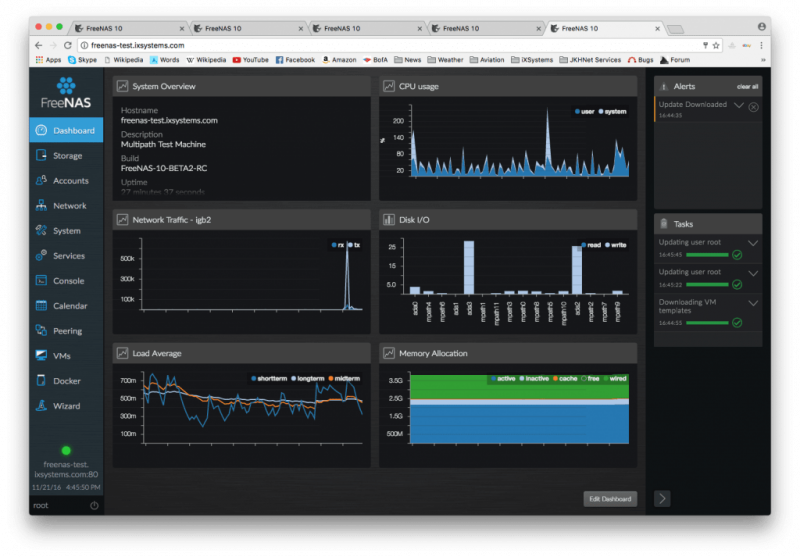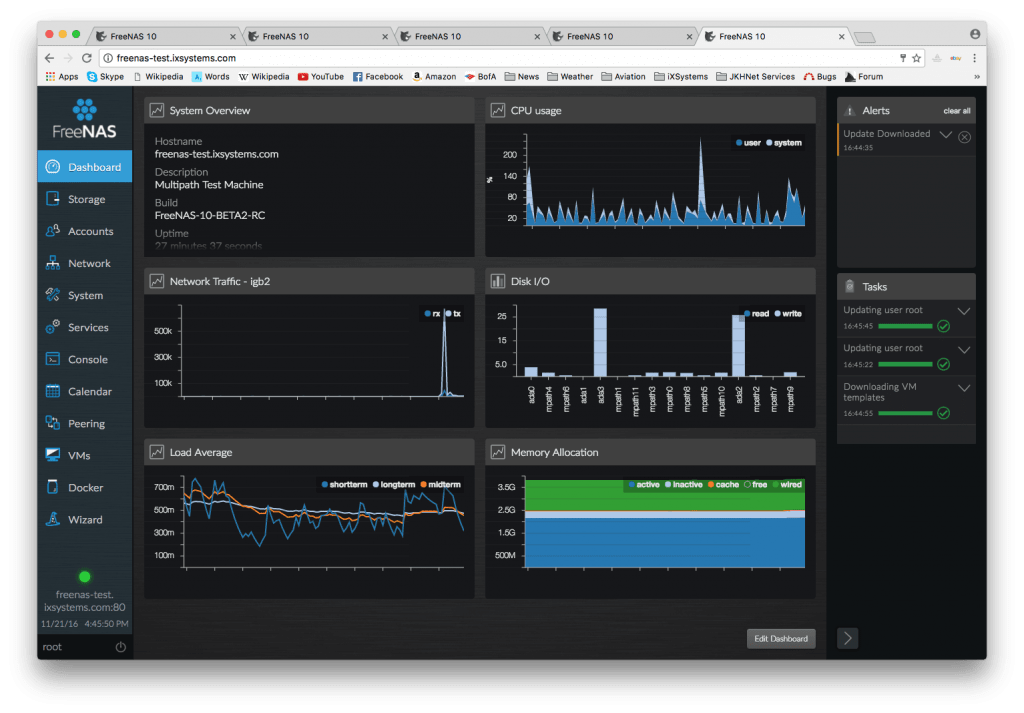At STH, we use FreeNAS 9.10 on several NAS systems. Over the past few months, I have had the opportunity to sit with the team at iXsystems, the company behind FreeNAS, and talk everything from next-gen hardware to software features. For those who attended our STH user feedback sessions (e.g. at VMworld 2016) we brought that feedback to the FreeNAS team. One of the biggest pieces of feedback is that the FreeNAS 9 UI was hard to navigate. FreeNAS 10 RC1 is now out, and the release candidate is essentially a complete overhaul of the popular NAS software.
FreeNAS 10 RC1
The UI is much more responsive than the FreeNAS 9.10 UI and more modern. Batch jobs also can be submitted and run asynchronously so you do not have to sit and wait for them to complete, a common problem for larger FreeNAS 9 systems. There are new Active Directory integrations as well.

One of the biggest changes is that the FreeNAS team is actively utilizing bhyve virtualization and Docker containers to bring application hosting to FreeNAS machines. FreeNAS 9 had an extremely limited set of plugins, especially compared to other SOHO/ SMB NAS vendors. What the FreeNAS 10 team is doing bringing the ability to quickly run applications and hosted VMs to the FreeNAS ecosystem, a feature that is sorely needed.
How to get FreeNAS 10 RC1
You can download the FreeNAS 10 RC1 here. The download can be found below the latest stable release which at the time of this writing is 9.10. Please note: we do not recommend RC1 for production use. It is a good build to fire up on an older machine or in a VM and test some of the new features. While the FreeBSD underpinnings may be stable, a lot can change with beta versions of software and so we still recommend waiting for a stable release.





I’m hyped for this release to go final. Freenas team doing incredible things.